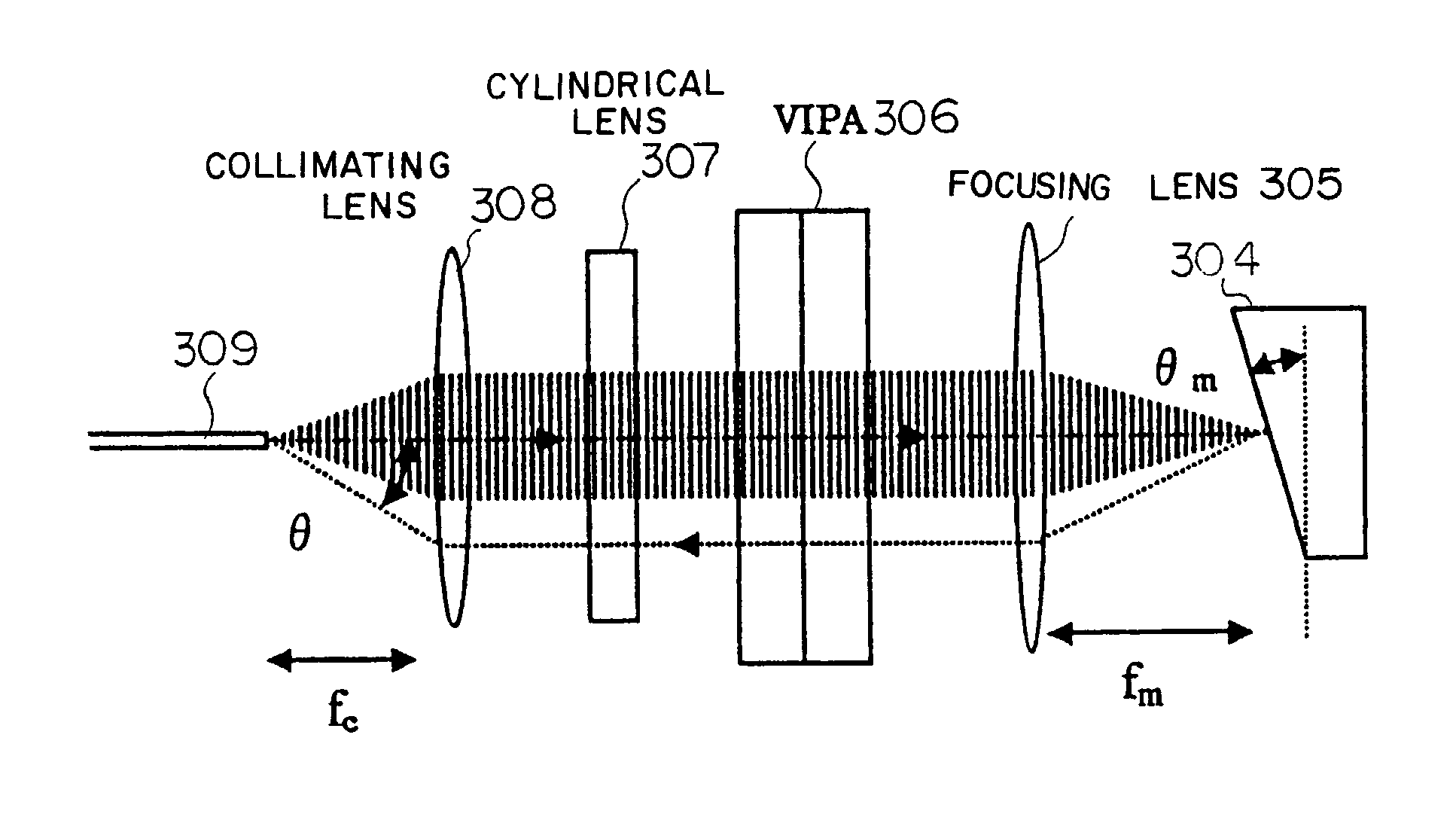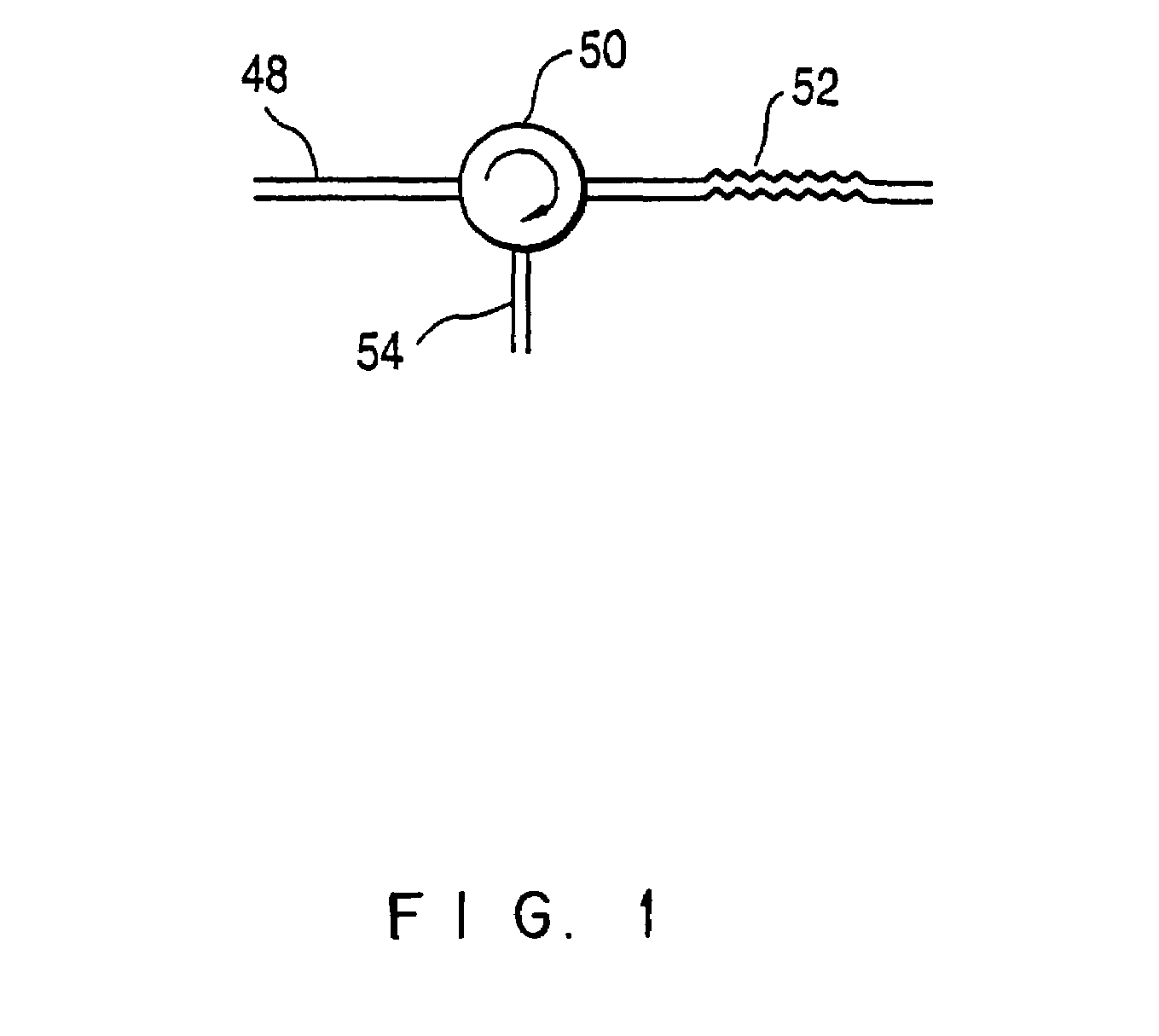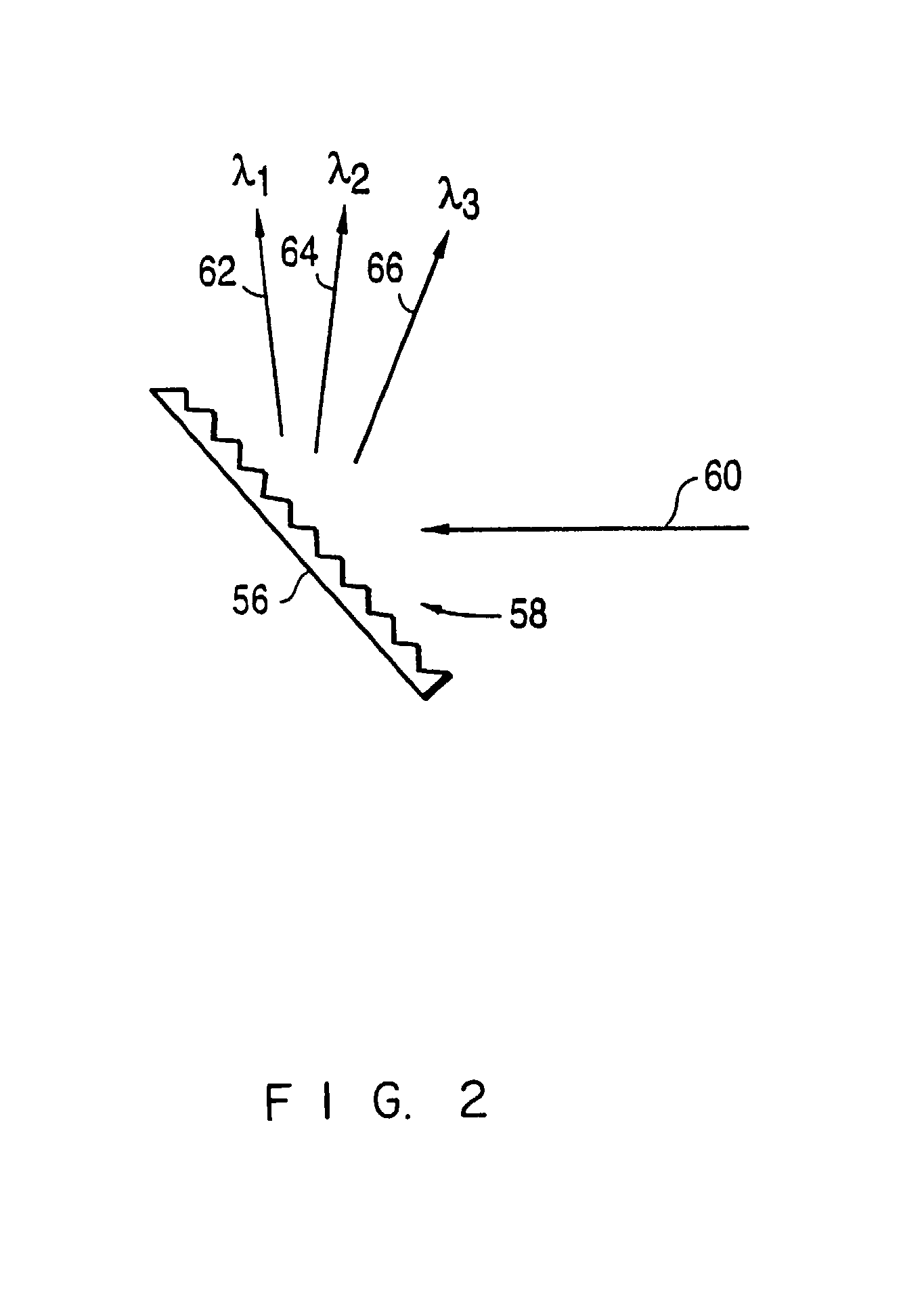Device using a virtually-imaged phased array (VIPA) with an improved transmission wave characteristic of output light
a technology of output light and phased array, which is applied in the field of devices using a virtually-imaged phased array to generate wavelength dispersion, can solve the problems of distortion, degrade the quality of signals in the system, and the time width of signal optical pulses is broadened in the optical fiber, so as to suppress the degradation of optical signals and level the transmission wavelength characteristic of vipa
- Summary
- Abstract
- Description
- Claims
- Application Information
AI Technical Summary
Benefits of technology
Problems solved by technology
Method used
Image
Examples
Embodiment Construction
[0077]Embodiments of the present invention provide a device comprising a mirror in a shape so as to generate almost uniform wavelength dispersion in an angular dispersion direction generated by a VIPA regardless of each wavelength output by the VIPA and means for controlling the size of the optical path deviation of light returning to the VIPA after being reflected off the mirror for each wavelength in the device comprising the VIPA.
[0078]The preferred embodiments of the present invention are described in detail below with reference to the drawings. In the attached drawings, devices with the same function are denoted by the same reference numbers.
[0079]FIG. 8 shows the configuration of a virtually-imaged phased array (VIPA) used in one preferred embodiment of the present invention. A “visually-imaged phased array” and a “VIPA” can be used interchangeably hereinafter.
[0080]According to FIG. 8, it is preferable to make a VIPA 76 from a thin glass plate. Input light 77 is collected int...
PUM
 Login to View More
Login to View More Abstract
Description
Claims
Application Information
 Login to View More
Login to View More - R&D
- Intellectual Property
- Life Sciences
- Materials
- Tech Scout
- Unparalleled Data Quality
- Higher Quality Content
- 60% Fewer Hallucinations
Browse by: Latest US Patents, China's latest patents, Technical Efficacy Thesaurus, Application Domain, Technology Topic, Popular Technical Reports.
© 2025 PatSnap. All rights reserved.Legal|Privacy policy|Modern Slavery Act Transparency Statement|Sitemap|About US| Contact US: help@patsnap.com



